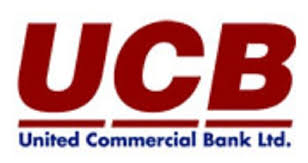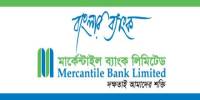Customer Perception about United Commercial Bank’s Remittance Services
A commercial bank performs an imperative function in the economy. It helps to mobilize money by a continuous procedure of borrowing and lending money. It accumulates its capital through both own sourcing and out sourcing (depositors are the major part of outsourcing). This amount is then lent to the other party. Being a service industry provides various services to its customers. So, every commercial bank has to think about their customer first, because the customers are the sovereign.
Overview Of United Commercial Bank Limited: United commercial bank started its journey in 1983.Its vision is to be the bank of first choice in all terms, sustainable inclusive business growth by ensuring efficiency, regulatory compliance, good asset quality, combination of experience and professional talents, consistent profitability and of course good governance. The formally started its commercial operation on 27 June in the same year. During the year 2012 the bank set record indeed in terms of advance, deposit and expansion of business through its continuous diversification. The bank obtained license to open offshore unit on June 9, 2010. As on December 31, 2012 the bank feel proud of having 131 branches and 81 ATM throughout the country. Eight more branches are in the offing to be opened in the year 2013 as approved by Bangladesh Bank.
As a fully licensed commercial bank, UCBL is being managed by a highly professional and dedicated team with long experience in banking. They constantly focus on understanding and anticipating customer needs. As the banking scenario undergoes changes so is the bank and it repositions itself in the changed market condition.
UCBL offers all kinds of Commercial Corporate and Personal Banking services covering all segments of society within the framework of Banking Company Act and rules and regulations laid down by our central bank. Diversification of products and services include Corporate Banking, General Banking Retail Banking and Consumer Banking right from industry to agriculture, and real state to software. With its firm commitment to the economic development of the country, the Bank has already made a distinct mark in the realm of Private Sector Banking through personalized service, innovative practices, dynamic approach and efficient Management. The Bank, aiming to play a leading role in the economic activities of the country, is firmly engaged in the development of trade, commerce and industry thorough a creative credit policy.
Consumer Perception about Commercial Banking:
Consumers are one of the most important sources of clients for any bank. Bank gets a lot of money for further investment from these clients by the savings account and fixed deposit given by the clients. So, it is highly required that bank takes care of its important clients and renders service in such a way that fulfills the requirement of the clients. But in recent times it has been seen that the banking activities of the clients have been reduced. So fulfilling the requirements is mostly needed. But, to fulfill the requirement at first bank needs to know about the need and demand of the clients
With the present recession of the global economy, the entire world’s business environment has been influenced. Although Bangladesh is a small country, global recession puts a very powerful impact on its business world. Every commercial bank is trying to give a better service to its customers to survive in this competitive business environment. As the activities in general banking division of commercial banks are directly related with the consumers, most of the banks are conscious with the activities of this division. In this paper I have discussed about findings from a list of variables that affect consumer perception about the commercial banks in Bangladesh. I have focused on identifying key variables that affect consumer perception about any bank. The variables that I used to identify consumer perception were customer loyalty, attention, accessibility, convenience, risks, trust, security, privacy, costs, attitude toward banking and service. Then these variables are summarized into three factors named as customer’s reliance, customer’s value and safety issues. My Result explains that people are highly conscious about these factors regarding their banking.
Customer’s Reliance: In this paper customer’s reliance is the combination of the commitment of the employee to the customers, convenience, and favorable attitude of the customer towards the bank and the trust of the customer on the bank. Whatever information the customer need whether they get to know all the information or not. Whether the sources of information are available or not. Another major perception of the customer is they want the commercial banks to be truth worthy so that they can rely on them.
Customer reliance composed of Commitment, Convenience, Attitude toward Banking and Trust. Customers are highly conscious about their reliance on bank. As bank deals with their monitory issues, customer wants to rely on the banker or relationship manager. Customer value: The second factor that extracted from this research is customer’s value. This customer’s value is the combination of informed about the services available in that bank and wants to do better utilization of his/her asset, making it into good portfolio. The good service quality of the officer helps the customer to increases his/her relationship with the bank. Thus customers become loyal to the bank. Besides, customers are highly conscious about their cost of service. As they are paying for the service what they get, they expect good services from their bank. Attention, Access, Service Quality, Loyalty, Cost of The difference between what a customer’s gets from product, and what he or she has to give in order to get it. A consumer does not consider value just in terms of money spent, but can also consider the time it takes to obtain a purchased product and interactions with customer service personnel. Customer value has several tiers and is best thought of as a hierarchy, according to Destination Marketing’s website.
This hierarchy determines the importance of services in the mind of the consumer in terms of what the consumer expects and does not expect from the purchase experience.
Safety Issue: The third factor that extracted from this research is concerned with the safety issues of customer. The variables that summarized in this factor are security, privacy and low risk. Customers want the safety and security of their asset. It’s expected that customer’s information are not shared with anyone else. Sometimes any customer may give authority to anyone to get his/her financial information like balance of the account or statement of any particular time frame. Those authorizations of any particular case are related to that specific time. Another option is giving delegation power of to someone by the account holder. With the entire options customer expect the safety and security of their information. Any bank can do well if it is highly conscious about the three factors discussed above. Maintaining this consciousness can help the bank to get good deposit (liability) and utilize those in profitable advance (asset).Security, Privacy, Low risk are the elements of customers safety issue. Consumer privacy concerns date back to the first commercial couriers and bankers, who in every culture took strong measures to protect customer privacy, but also in every culture tended to be subject to very harsh punitive measures for failures to keep a customer’s information private.
Importance of Remittance in Bangladesh: As one of the Least Developed Countries (LDC), foreign currency is needed for socio-economic development. Remittances help Bangladesh to make investments for industrial development, modernize its industries by importing high-tech machineries for exportoriented manufacturing, modernize its agriculture, invest in education, etc.
On the one hand, these factors create more employment in the country and on the other, help the country to increase its export of manufactured goods as opposed to agricultural products, raw materials, low quality finished products etc., as they were in the past. In 2008, the total value of exports from its agricultural, industrial and service sectors was $13.97 billion whereas in 2008 it received $9.02 billion from its overseas workers as formal remittances. Thus, we must consider remittance as a very important source of foreign exchange earnings for the country. If we combine both formal and informal remittances the total exceeds the total earnings from its exports.
Remittances also help Bangladesh in making the balance of payments favorable, or make up the deficit between total export and import. For example, in 2008, Bangladesh exported $13.97 billion worth of goods and services and in turn imported $19.59 billion worth of goods and services. This gave a deficit of $5.62 billion in Bangladesh’s Balance of Payment (BOP).
However, in 2008, the amount of remittances that Bangladesh received from its migrant workers abroad amounted to $9.02 billion and that helped Bangladesh correct its BOP deficit to a surplus of $3.4 billion. In July 2009, Bangladesh’s BOP surplus reached $1.39 billion. Remittance in the first 11 months of the fiscal year 2008-2009 was $8.76 billion, which helped boost the country’s BOP.
According to a World Bank analyst remittance has been a key driver of economic growth and poverty reduction in Bangladesh. The migrants send back billions of dollars and the country can then use these resources for investment for industrial development, improvement of educational facilities and services, and extend and improve its health services. The money that is sent back is also beneficial to the families and to the country in that it helps reduce poverty and also allows for investment in small businesses and chances for furthering education.
The government also believes that there is compelling evidence that international migration – through remittances and the transfer of social capital — can positively contribute towards alleviating poverty. The government is also convinced that the effects are both direct and also through consumption and investment multipliers. Migration provides job opportunities to the young population in Bangladesh.
These views are also supported by the 2005 IOM report “The MDGs and Migration,” which explains how migration can not only increase income (remittances) but also reduce economic inequality in the society, and thus recommends mainstreaming migration into poverty reduction strategies.
The remittance market of Bangladesh has been showing a steady growth in terms of incoming remittance volume. Considering the current macro-economic indicators it seems that this growth run will continue in the coming years. Central Bank predicts that our annual incoming foreign remittance will touch $10 billion in the next 3 years. The reasons for such robust growth can be summarized as:
- Stable macro-economic indicators including GDP growth,
- Steady growth in manpower export specially in the middle east
- Substantial devaluation of the local currency
- Rapid urbanization
- Development of new remittance corridors in Australia and part of Europe and Africa
- Increased focus of Central Bank and the Government to channel funds through Formal channels
- Increased competition among financial institution to grab market share
- Aggressive marketing policy adopted by Banks to increase their share of wallet
- Expansion of branch network of various commercial banks
- MFIs involvement in channeling remittance funds in remote areas
- Participation in the UN peace keeping missions
- Anti-Money Laundering rules and regulations came in force
However, the market is still far from perfection in terms of service quality, cost structure, and transaction risk aspects. Among all, the biggest impediment is the speed of transactions and cost of transaction. In cases, it takes more than a week to send a foreign remittance to beneficiary
UCBL’S Foreign Exchange Department:
Foreign Exchange Department: Foreign Exchange Department is an important one in UCBL Mohakhali Branch that deals with import, export, and foreign remittance and post import financing. Through this is an ancillary service provided by the Bank. The Bank is purchasing primary security by giving loan in form of loan against imported merchandise (LIM), and loan against trust receipt (LTR). Bank branch should be ‘Authorized Dealer’ with the approval of Bangladesh Bank to run foreign exchange business. This department is playing an important role in enhancing export earnings, which aids economic growth and, in turn, will be helpful for economic development. On the other hand, it also helps to meet those goods and services, which are more demandable and not adequate in our country.
Function of Foreign Exchange
- L/C opening & L/C amendment
- Sanctioning PAD, LIM, LTR, Packing credit
- Foreign Bill Purchase
- Local Bill Purchase
- Foreign Currency Account Maintaining
- Foreign Currency Remitted
Foreign Exchange Import: Import policy refers to government policies account for a particular fiscal period envisaging the allocation of fund available from various sources for import of certain quantity of certain goods.
The main purpose of the policy is to conserve scare foreign exchange & to ensure its utilization for the import of goods and services which have national priority. The selected persons on institutions those who have got valid
Import Registration Certificate (IRC) form the Chief Controller of Import and Export (CCI & E) can import and they are known as importers.
Opening of L/C by Importer: An Importer is required to fulfill some conditions/criteria to be eligible as an importer as per provisions of import policy order and guide lines for Foreign Exchange Transaction. An importer is required to submit the following documents along with L/C applications to get a license to import goods through UCBL.
- A current account with UCBL, Mohakhali Branch.
- Import Registration Certificate (IRC)
- Pro -forma Invoice/Indent
- Tax Identification Number ( TIN)
- Membership Certificate from recognized Chamber of Commerce and Industry.
- Letter of Credit Authorization (LCA) from duly attested.
- L/C application duly signed by the importer.
- One set of IMP form.
Foreign Exchange Export : According to Foreign Exchange Regulation Act, 1947, nobody can export by post and otherwise any goods either directly or indirectly to any place outside Bangladesh, unless a declaration is furnished by the exporter to the collector of customs or to such other person as the
Bangladesh Bank may specify in this behalf that foreign exchange representing the full export value of the goods have been or will be disposed of in a manner and within a period specified by Bangladesh Bank.
Payment for goods exported from Bangladesh should be received through an Authorized Dealer in freely convertible foreign currency or in Bangladeshi Taka from a Non-Resident Account.
Back to Back Letter of Credit
Back-to-Back L/C is a secondary L/C opened by the seller’s Bank based on the original/master L/C to purchase the raw materials and accessories for manufacturing of the export products required by the seller. In our country, export oriented Garment Industry, operating under bonded warehouse system are availing Back-to-Back facilities.
In UCBL, Mohakhali Branch most of the Back–to –Back L/C opened on Garment Industry Account. Therefore the discussion is based on account of garment Industry in Bangladesh.
Necessary information is written down in the performance register. Next, the dispatch employee will write down the confirmation letter which is send to the Bank of the importer. In addition to above documents, the following are also required to export oriented garments industries while requesting for opening a Back-to-Back L/C
- Textile Permission
- Valid bonded warehouse license
- Quota Allocation Letter issued by the Export Promotion Bureau (EPB) in favor of applicant for quota items.
- BGMEA Membership.
In case the factory premises is a rented one, the Letter of Disclaimer duly executed by the owner of the house/premises to be submitted. A check list to open a Back-to -Back L/C as follows:
- Applicant is registered with CCI&E and has bonded ware house license.
- The master L/C has adequate Validity period and has no defective clause.
- L/C value shall not exceed the admissible percentage of net FOB value of relative master L/C. Usage period is up to 180 days.
Export Financing Techniques
An exporter requires finance at two stages namely
- Pre-shipment stage
- Post-shipment stage
The credit facility available to the exporters at the former stage is known as pre-shipment credit and the same required at the later stage is known as post-shipment credit.
Foreign Remittance: Foreign Remittance means purchase and sale of freely convertible foreign currencies as admissible under Exchange Control Regulation of the country. The transaction of the authorized dealer in foreign exchange involves either outward or inward remittances of foreign exchange from one country to another. As an authorized dealer the Local Office Branch of UCBL provides its customer foreign remittance by FBC, LEBC, sale, and purchase of FTT, FDD, travel’s cheque, FBP.
The Bank provides the foreign remittance facilities to the student studying aboard. Bank also provides foreign exchange in the shape of traveler’s cheques to the intending visitors.
Foreign Inward Remittance: The remittance which is received from abroad are called foreign inward remittance. Remittances of foreign currency being received in the country from abroad are called Inward Foreign Remittance. It covers purchase of foreign currency in the form of Foreign T.T, D.D and bills, T.C etc. sent from abroad favoring a beneficiary in Bangladesh. Purchase of foreign exchange is to be reported to Exchange Control Department of Bangladesh Bank on Form-C.
Foreign Outward Remittance: Remittance which is made from our country to abroad is called foreign outward remittance. Foreign currency being made out abroad may be termed as Foreign Outward Remittance. That means, remittance in foreign currency that goes out abroad is called Foreign Outward Remittance. It covers sales of foreign currency through issuing foreign T.T, Drafts, Travelers Check etc. as well as sell of foreign exchange under L/C and against import bills retired.
Other Types of Remittances:
Family Remittance: It refers to remittances that are sent by individual immigrants working in the foreign locations to their family, relatives or friends in their home country. These remittances are sent every month and they assist the families of the migrants to survive. These remittances also help the poor families to fight against the poverty. The family remittances are regarded as the major form of remittances across the world where millions of workers are working hard in distant land away from their home for earning their livelihood.
Foreign Remittance
Foreign Inward Remittance Foreign Outward Remittance
Community Remittances: It refers to the remittance that is sent by individual immigrants generally and also includes the remittance sent by various hometown associations to organizations and communities in their home country. This money has been used for the developmental activities of communities such as in building infrastructure, church, parks, and roads. It also offers health care to the poor. The community remittances are also used for offering health benefits, education; and employment to big communities who need these facilities in the home countries.
Migrant Worker References: This remittance refers to the cash transfers done by migrant workers for sending the money to the families, friends and relatives back home. The migrant worker remittances make up a large amount of money inflows into home country by the people who have migrated to foreign locations in the search of money, job or education
Social Remittances: These remittances basically comprise of various ideas, practices, and social capital that make up the backbone of many remittances that flows from workers of one country to another. Thus social remittances assist the traditions and culture of one race or community, to socialize with the cultures and traditions of another community. Social Remittances help in the bonding of people and do not have money associated with them.
Channel of Foreign Remittance: There have two types of channel to transfer money to Bangladesh from different countries. Those are:
1. Official channel:
Telegraphic Transfers:
A telegraphic transfer makes fund transfers abroad through an integrated Banking System. It allows for quick and efficient payments to ensure that the funds reach the destination fast and safe.
Western Union:
Western Union is the fast way to send and receive money worldwide to over 200 countries.
Demand Draft:
A cheaper method for payments made overseas. Funds are cleared through our correspondent’s in major cities around the world.
Travelers’ Cheques:
Travel smart with Travelers’ Cheques which are acceptable worldwide for a trouble-free and safe trip.
Postal Order:
Postal order is an official piece of paper with an amount of money written on it, which you post to someone who can then exchange it for the same amount of money at a post office. By this channel one can easily cheaply transfer money from foreign countries.
Other Official Channel: There have some other official channel to transfer remittance. Those are as follows:
- Account to account transfer
- Electronic transfer
- Automatic teller machine (ATM) facilities
- Unofficial channel:
Hundi system:
The hundi operator or agent is in fact an illegal foreign exchange dealer. The send the hundi operator in a foreign country the currency of that country or dollar or pound or any acceptable currency by the operator while his relatives or agent in Bangladesh receives equivalent amount of money in taka. The agent in Bangladesh is conduct by the telephone, fax or e-mail by thehundi in the host country and the sub-agent pays the money to relative of the sender. The hundirate is usually 1 or 2 higher than the official exchange rate.
Relatives and Friends:
Migrants and their relative or friends often bring consumer resilient, gold, electronics etc. and also foreign currency without declaring it to appropriate authority. These are often sold in the local market and dollar in the local market.
Sources of Remittance:
Countries from which most of our wage earners remittance comes are as follows:
Bahrain Australia
Kuwait Hong Kong
Oman Italy
Qatar Malaysia
K.S.A Singapore
U.A.E. U.K.
Libya U.S.A.
Germany Iran
Use of foreign remittance:
Use in households:
The portion of remittance, the families use in consumption in different purposes such as food and clothing, purchase of land, marriage and ceremonies, trading, education, health care and so forth. They use maximum portion in food and clothing than in purchase of land than in home construction and decreasing in respect.
Savings/Fixed deposit:
The portion of remittance received by our country people save in different banks. They deposit big amount of money as fixed deposit for their future needs.
Investment in Business:
They also use remittance money in existing business or to open a new business. The business may be small of big. It depends on the remitted money them received.
Repayment of loan:
Most of the cases remittance money is use for payment of lone that takes from different banks or people. Because most of the people who go abroad as worker financed the migration process by taking lone from different banks and people.
Gift/donation to relatives:
This money is use for present gift to relatives or for donation for a while.
Furniture:
Most of the low or middle classes people depend on this money to obtain home furniture.
Home construction / repair:
In major cases most of remittance money is used for construction of new home and repairing of house.
Wage earners remittance in graph:
Wage earners remittance was not good after the first time of our independence. Then year after year it was changing and it going up and up. Now the entire scenario has been changed. Now big amount of skilled workers are working in different developed countries and sending huge amount of foreign remittance to our county. That changes their family condition as well as our economy.
Impact on the economy:
Totally the contribution of foreign remittance rising of living standard cannot be described so easily. So the importance of foreign remittance in the economy of Bangladesh is widely recognized and requires little reiteration.
Impact on the GNP:
Increase in foreign remittance also increases the national income. As the national income increase the consumption of goods by the country people also increase. So, production of goods by the different organizations increases as well. It increases our country’s GNP.
Impact of remittance on consumption:
As the remittance increase the consumption of goods by the country people also increase.
Increase savings:
Foreign remittance that comes from different developed countries is increasing the level of our savings. The remittance received by our country people is saving in different banks by making long term or short term deposit.
Increase capital:
Remittance received from different developed countries which is saving in different banks a big source of capital. This huge amount of money is investing is different project by the bank.
Impact of remittance on investment:
Foreign remittance is increasing the investment of our country. The remittance is using for small and big investment in different project, establishing firm or industry, small or big shop which increases the proper utilization of money.
Increase employment:
As the investment increase, the employments of our country also increase. The people of our country are getting jobs in different project, firm or industries. Impact of remittance on import: It has a bad impact on our economy.
By increasing remittance, it also increases consumption of foreign product. It increasing the import of foreign product day by day as well, Peoples have enough money to buy foreign product, although government is trying to save our domestic companies by implementing necessary rules and regulation
Concept Development: Remittances have emerged as a key driver of economic growth and poverty reduction in Bangladesh. Revenues from remittances now exceed various types of foreign exchange inflows, particularly official development assistance and net earnings from export. Considering the role of foreign remittance in the overall economic development of the country the bank has set top priority for mobilizing inward foreign remittance from Bangladeshi migrant workers living and working abroad. The bank has restructured its existing remittance set up with skilled and efficient manpower in order to provide seamless delivery of remittances to the beneficiaries through Banks 130 branch network in strategic locations. Furthermore the bank has also taken initiative to strengthen ties with the exchange companies with whom the bank has arrangement with through strong relationship management and has also taken initiatives to enter into new arrangements with other exchange companies having potential to send higher volume of inward foreign remittance. Up to 31 December 2012, the bank has established relationship with lending exchange companies in Bahrain, France, KSA, Kuwait, Oman, Qatar, UAE and UK. In additional the bank has remittance agreement with global remittance company like western union.
Current Remittance Process: Currently the remittance process is mostly manual, partially automated.
Migrants use different methods in sending remittance involving both official and unofficial channels. A major portion of remittance is being processed by Hawala’s which is also known as ‘hundi’ , which is an illegal process. And these Hawalla’s are getting market due to lengthy process of remittance management using banking channel.
Legally bank and exchange house acts as main means for remittance. Exchange houses play a vital role as remitters touch point. Mostly, remittance process initiates from exchange house .Exchange house acts as the contact point for remitter, exchange house receives the payment instruction from remitter and transfer the instruction to bank with which they have bilateral arrangement for fund mobilization. The receiving bank receives the fund and routes the remittance to actual beneficiary through other banks or agents.
Central bank acts as clearing house for inter-bank fund transfer.
Officially, transfer of remittance takes place through demand draft issued by a bank or an exchange house, telegraphic transfer; postal order; account to account transfer. When remittances are transferred directly from the foreign account of migrant worker to his own account at home it is known as direct transfer. This can be through telegraphic means or otherwise. Remittances are frequently sent through demand draft in Taka issued by a bank or an exchange house in favor of a nominee of migrant. Usually the draft is sent by post or in emergency by courier service. One can send remittance through the postal authorities. In such case the remitted money is handed over to the receiver by the local post-office.
As there is no automated system between exchange house to and bank to bank – the process takes weeks to process a transaction in general.
Roadblocks in Current Remittance Process
The major roadblocks of a smooth and efficient payment of foreign remittances are as follows:
- Poor infrastructure in rural and semi-urban economy
- Inadequate reach of private commercial banks within the country
- Massive information asymmetry in the market
- Active ‘Hundi’ market
- Inefficiency of financial institutions
- Poorly regulated exchange houses
- Low literacy rate in the country
- Uneven competition among financial institutions
- Lack of investment in IT backbone development for market efficiency
- Absence of a strong central payment gateway for ‘Straight Though Processing (STP) of payment services
These above imperfections/inefficiencies have resulted in abnormal share of ‘Hundi’ business in this sector. Today, it is estimated that the share of ‘Hundi’ business constitutes roughly 40% of total incoming foreign remittances.
Steps Taken for Remittance Process Improvement
Government as well as private sector has undertaken various strategies to make remittance transfer easier and hassle free. Now, the Nationalized Commercial Banks (NCBs) have some overseas branches/remittance wings for transferring remittances. The private commercial banks (PCBs) also become aggressive in transferring remittances by providing quick and reliable services. Some of the PCBs also have established oversees branch or correspondence relationship with Banks/Exchange Houses.
Although the nationalized and private commercial banks have taken various marketing strategies to transfer remittances, but even today, the choice of remittance channel is 46% formal and 54% informal.
4. Methodology of the Study
I joined as an intern in UCBL Mohakhali Branch on May 4, 2014. I was assigned to work under all the 3 departments within 3 months. I was allocated for 1 month for each department. I worked under each officer and learn from them directly. I frequently ask questions and obey their instructions. As I worked over there as an Intern for about 3 months, they have allowed me to collect the information from their files, books, audit reports etc. Sometimes they have provided data verbally & I took note of that. Maximum time I retrieved data through my observation to them.
Sources of Information
I have elaborated different types of secondary data in my research. Sources of secondary Information can be defined as follows:
Internal Sources
- Bank’s Annual Report.
- Financial Statement.
- Any information regarding the Banking sector
External Sources
- Different books and periodicals related to the banking sector.
Findings& Analysis:
In terms of finding the customer perception about the remittance services I have conducted a survey within UCBL where the number of respondent was 22 and the respondents were the customers of UCBL who are taking the remittance services from UCBL .In the below discussion the results of survey is briefly described.
Some Major Finding from the Foreign Exchange of UCBL
During my project work in the United Commercial Bank Ltd, I have worked in Mohakhali Branch. During this period I have found that the foreign exchange operations mainly include L/C, import & export procedure. As an Authorized dealer, UCB Mohakhali Branch is always committed to facility of import and export of different goods
- Total Foreign Exchange Business is gradually increasing from 2009-2013. This is a positive sign and was possible due to the Bank able to earn confidence of the clients and all corners of people of the country irrespective of castle and creed.
- Import Business of UCB increased from 2009-2013
- The national export position and share of UCB is flaunting year to year.
- The Remittance Business of UCB is fluctuating year to year.
- The Remittance share percentage of UCB is increasing from 2012 to 2013.
- Compare the position of Import UCB share percentage was lower in 2013 than the previous year.
- Compare the position of Export, UCB share percentage was increasing year to year and was higher in 2013 than the previous year.
- The national remittances position and share of UCB is flaunting year to year.
Recommendation :
It is quite difficult to give suggestion to improve the banking conditions of UCBL. As we know that nothing is perfect, there is always a room for improvement, so I have found during my internship can be made up taking into account the following suggestions:
Foreign Exchange section has to be decentralized to make their decisions with more responsibility. United Commercial Bank Limited should offer some services to attract the foreign remittance. As Bangladesh has a high number of non-residential, collecting remittance can be good way of generating revenue for the company.
Regular performance appraisal and assurance of promotion/reward should depend on that they will resist the employee’s switching tendency. Software up gradation is a necessity to enhance performance. Yearly financial report has to be published only for foreign exchange activities in details. United Commercial Bank Limited can open new branches in places where people of that region live abroad and send money to their family. Reducing existing charges can successfully attract a huge number of customers to United Commercial Bank Limited. If charges are made considerable, UCBL can capture a big portion of middle class society who can be proved to be better customer than any other class of the society. United Commercial Bank Limited should lower their charges immediately so as to prevent the loss of customers.
Conclusion: United Commercial Bank is one of the most promising private commercial banks in Bangladesh. Every day United Commercial Bank makes an effort to increase their product and services although they provide a wide range of product and services. It is committed to provide high quality financial service to contribute to the growth of GDP of the country and the growth of industrialization, boosting up export, creating employment opportunity for the educated youth, raising standard of living of limited income group and overall sustainable socioeconomic development of the country. UCB always tried its level best to perform financially well. In spite of trying to do well in some aspects UCB faced some financial problems from time to time. Some of the problems were-excessive bad loans, shortage of loans and advances, scarcity of cash in hands due to vault limit etc. These problems arouse time to time due to economic slowdown, interest rate fluctuation, emerging capital market, inflation in the money market and so on. Fighting with all these problems and competing with other banks every moment the bank is trying to do better to best. If this thing continues we hope that United Commercial Bank will develop even more in the future.
















